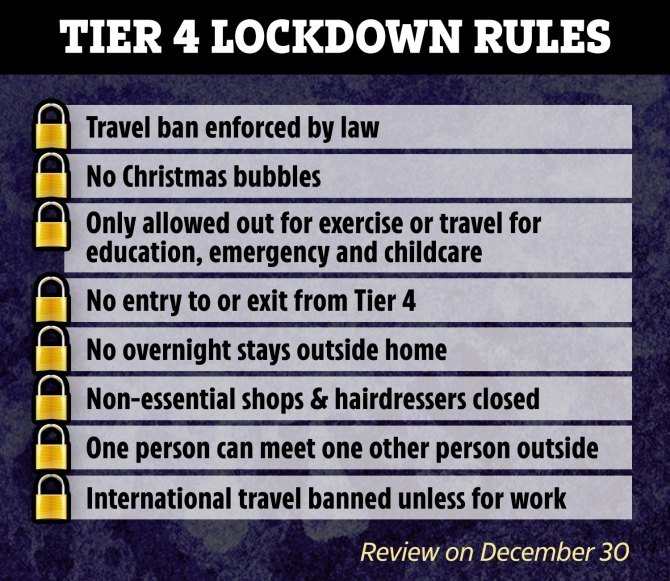COVID-19 cases in the UK have been surging as a vicious second wave engulfs the country amid a bitterly cold winter.
Now even tougher restrictions to deal with the coronavirus crisis could be on the way in the next few weeks, Boris Johnson has signalled.
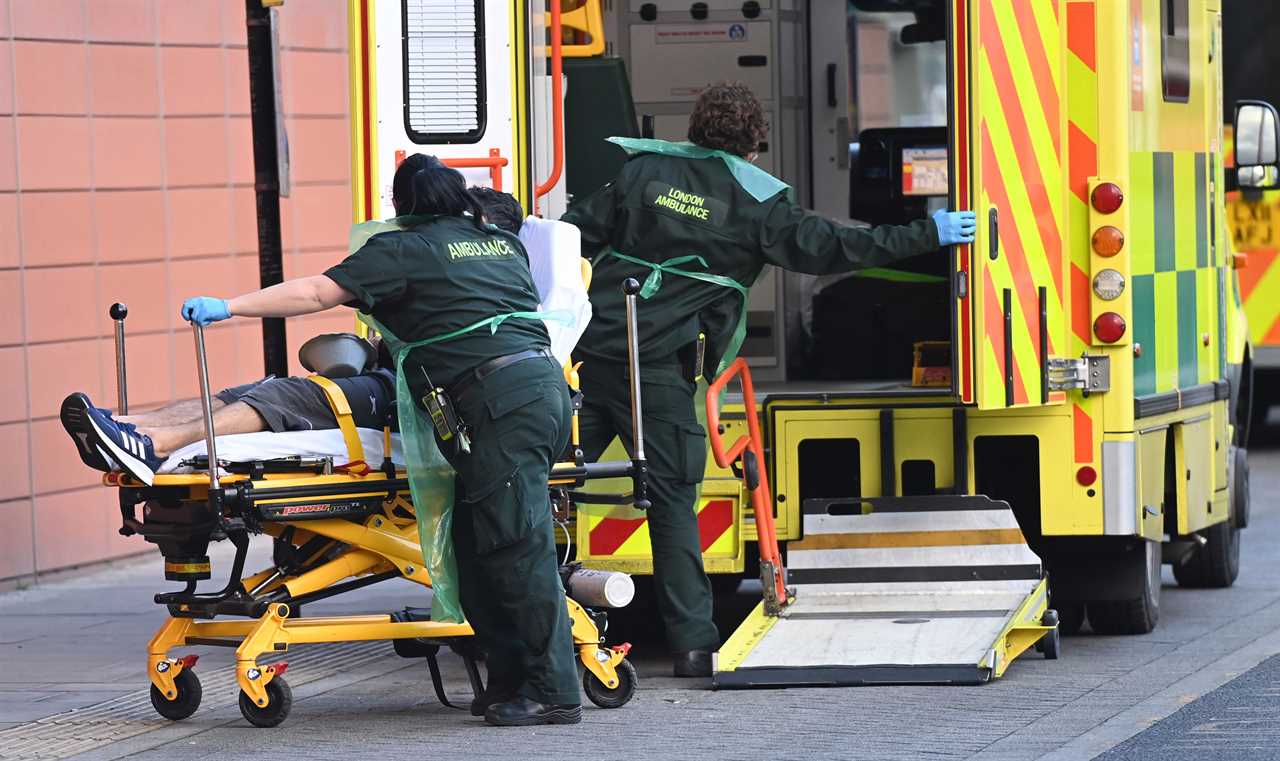
When is the next tier review date?
Boris Johnson’s Government last changed the tier system on December 30.
Then they upgraded swathes of the UK to Tier 3 or Tier 4, leaving just the Isle of Scilly in Tier 1, with no areas under Tier 2 restrictions.
But the tiers are reviewed every two weeks, so we can expect the next review on January 13.
Whether or not we will hear from the Prime Minister, or whether the review will mean an introduction of Tier 5, at this point is unclear.
The Prime Minister said he was “fully reconciled” to a probable tightening of the anti-Covid measures.
Mr Johnson said the tiering system was already “very tough” and would likely need tightening.
The Prime Minister told BBC1’s Andrew Marr Show: “It may be that we need to do things in the next few weeks that will be tougher in many parts of the country.
“I’m fully, fully reconciled to that.
“There is obviously a range of tougher measures that we would have to consider.
“I’m not going to speculate now about what they would be, but I’m sure that all our viewers and our listeners will understand what the sort of things… clearly school closures, which we had to do in March is one of those things.”
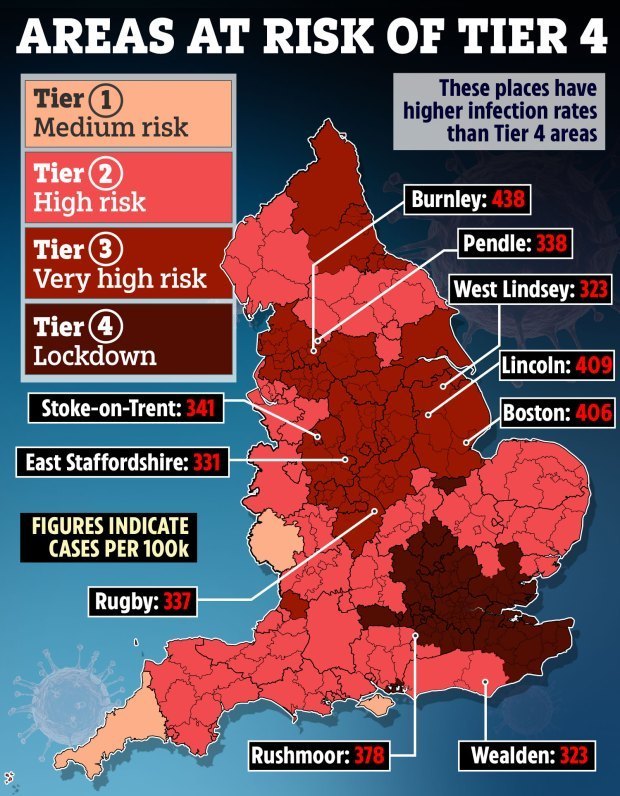
Which areas are likely to move tiers?
Areas that are in Tiers 1 to 3 could be moved to Tier 4, given how quickly the mutant Covid strain is spreading.
An extra “Tier 5” looks likely to be introduced for some of those currently in Tier 4.
It not yet clear what this would involve, but it is widely speculated that it could be similar to the first lockdown back in March.
All Schools and universities were closed, with remote online instead.
The first lockdown also meant older and vulnerable people were forced to “shield”.
So, this may mean staying home throughout Tier 5 is on the cards.
During the spring shutdown, people were unable to meet anyone from another household, both indoors and out, even for a walk around the park.
Then, you were only allowed to leave your home for certain reasons, and exercise was limited to one hour a day per person.
These restrictions may be similar if Tier 5 is introduced.
Travelling to holiday homes or second homes could be banned, and hotels may close, like the first wave.
In the previous lockdown, some playgrounds were shut. That might happen again.
When will the Tier system end?
How long is England’s tier system set to last?
The tier system had been scheduled to expire at the end of March 2021.
But after facing a rebellion from backbench Tory rebellion over the strict rules, Boris Johnson wrote to MPs vowing a Commons vote on 27 January, with a “sunset” end date for tiers on 3 February.
At the same time, Johnson wrote an article for The Mail on Sunday insisting that he believed that Easter 2021, which is on April 4 – would mark “a real chance to return to something like life as normal” in the UK.
Yet, it has to be remembered that the new Covid variant in the UK could change the timings of everything.
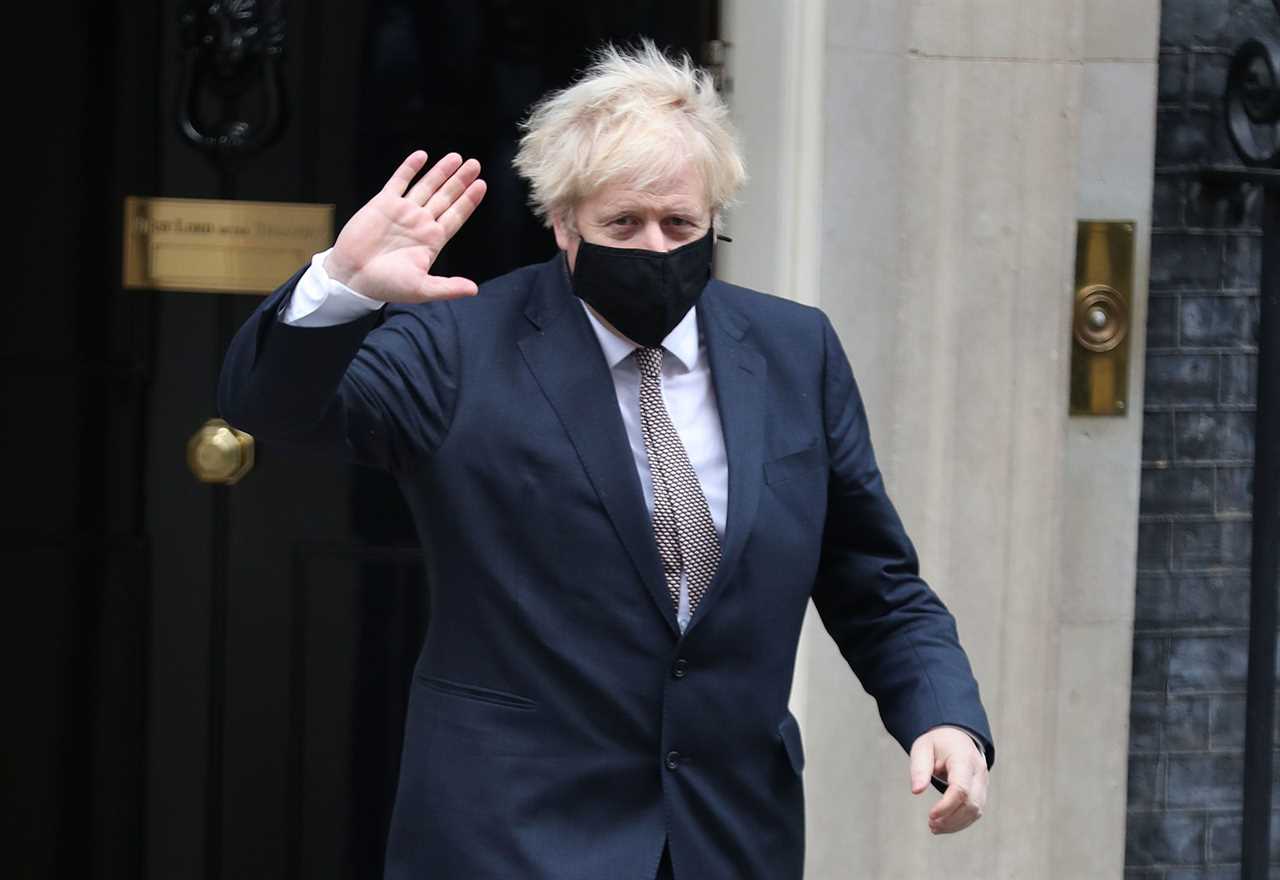
What tier am I in?
Today Tier 4 measures were introduced in the following areas:
- Sussex
- Oxfordshire
- Norfolk
- Cambridgeshire
- Those parts of Essex not yet in Tier 4
- Waverley in Surrey
- Hampshire
Tier 3 measures were introduced in the following areas:
- Bristol
- Gloucestershire
- Somerset
- Swindon
- Isle of Wight
- New forest
- Northamptonshire
- Cheshire
- Warrington
Tier 2 measures were introduced in the following areas:
- Cornwall
- Herefordshire
The areas join areas already put into Tier 4 on Saturday, which were:
- Kent
- Buckinghamshire
- Berkshire
- Surrey (excluding Waverley)
- The boroughs of Gosport, Havant, Portsmouth, Rother and Hastings
- All 32 London boroughs and the city of London.
- Bedford, Central Bedfordshire, Milton Keynes, Luton, Peterborough
- Hertfordshire
- Essex (excluding Colchester, Uttlesford and Tendring)
Announcing the new measures, Matt Hancock urged Brits to “not give up now” – saying “we can get through this together”.
He added: “I know from the bottom of my heart there are brighter skies ahead.”
The PM had insisted just days before that Christmas will still go ahead for families – and it would be “inhuman” to cancel it.
But while some Brits were able to meet with their family for Christmas Day, more than 22 million were told last weekend they would need to stay in lockdown.
The draconian moves come in response to a new Covid strain, which was identified in the South East back in September, which is now spreading throughout Britain and becoming the dominant strain.
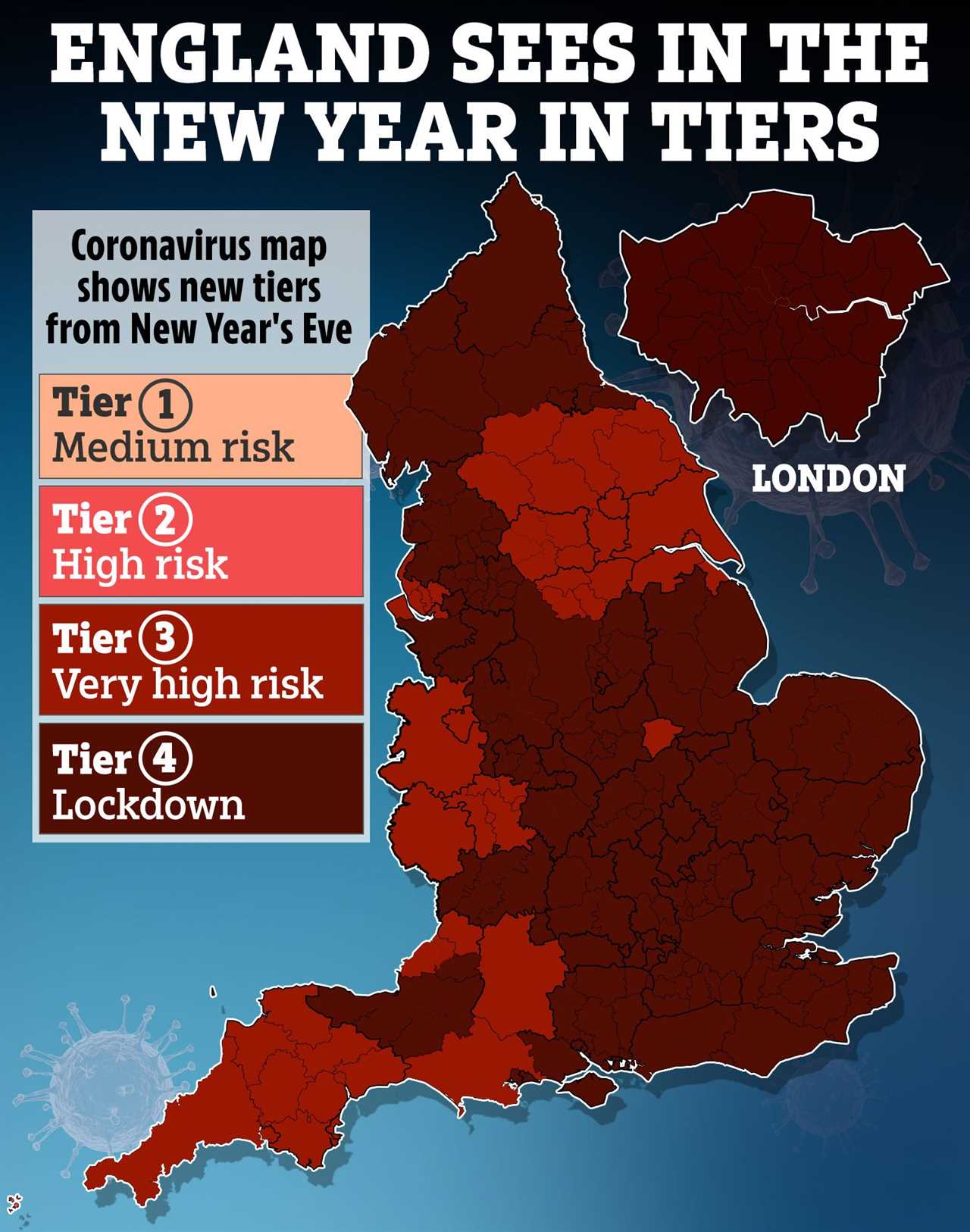
What are the rules for each tier?
In areas placed in Tier 1-3, non-essential shops can trade – while gyms, pools and leisure centres are also allowed to remain open.
The rule of six applies across all tiers apart from Tier 4 in outdoor public spaces such as parks and beaches, but only Tier 1 is allowed to meet members from another household indoors.
Tier 1 Rules
Only the Isles of Scilly, the Isle of Wight and Cornwall were placed in the lowest tier from December 2.
Tier 1 allows the most freedom, including meeting other households inside for up to six people and attending public sporting events.
In Tier 1, you can:
- Mix households in groups of up to six both indoors and outdoors
- Visit pubs and restaurants indoors – although you must place their last orders at 10pm
- Open non-essential shops
- Open hair, beauty and nail salons
- Visit gyms, pools, and leisure facilities
- Visit public buildings such as libraries
- After 10pm hospitality businesses can sell food and drink via delivery service, click-and-collect or drive-through
- Visit casinos, cinemas, theatres, museums, bowling alleys, amusement arcades, funfairs, theme parks, adventure parks and activities, and bingo halls – but they must shut at 11pm
- Have a wedding with up to 15 people – with 15 allowed at the reception
- Hold a funeral with up to 30 mourners – with 15 people allowed to attend the wake
- Places of worship can stay open
- Organised outdoor sport, and physical activity and exercise classes can continue
- You can travel through a Tier 3 area as a part of a longer journey
- Public attendance at outdoor and indoor events (performances and shows) is allowed, limited to whichever is lower: 50% capacity, or either 4,000 people outdoors or 1,000 people indoors
- Public attendance at spectator sport and business events can resume inside and outside, limited to whichever is lower: 50% capacity, or either 4,000 people outdoors or 1,000 people indoors
In Tier 1, you can’t:
- Meet up with more than six people indoors or outdoors
- Travel to or have overnight stays in Tier 3 areas other than where necessary, such as for work, education or to receive medical treatment
- You should still work from home if possible
- You should still wear a face covering
Tier 2 Rules
London and Liverpool have both been placed in Tier 2, which is classed as “high” risk.
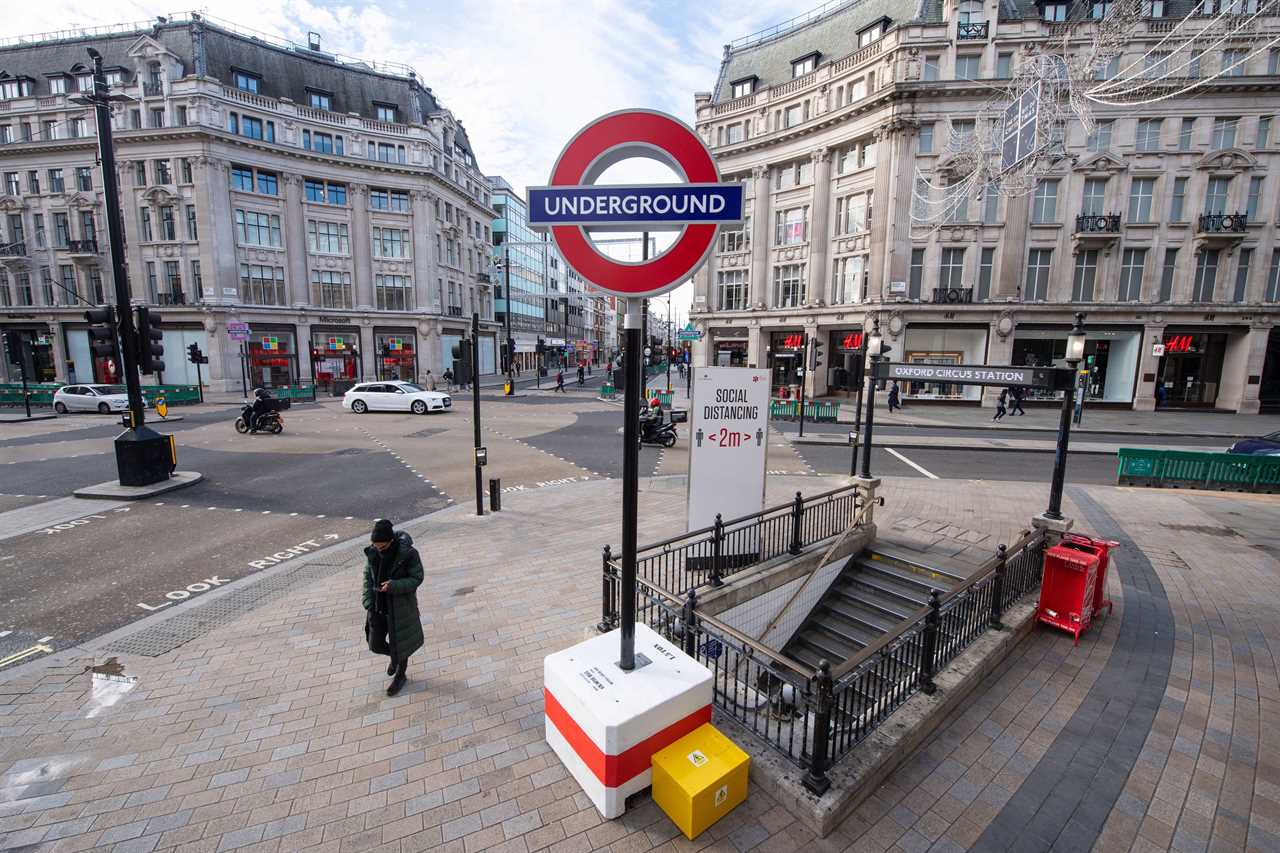
In Tier 2, you can:
- Open non-essential shops
- Meet others in public outdoor spaces in groups of six
- Form a support bubble
- Travel to work if you can’t work from home
- Open hair, beauty and nail salons
- Visit gyms, pools, and leisure facilities
- Visit public buildings such as libraries
- Have a “substantial meal” at a pub or restaurant
- After 10pm hospitality businesses can sell food and drink via delivery service, click-and-collect or drive-through
- Visit casinos, cinemas, theatres, museums, bowling alleys, amusement arcades, funfairs, theme parks, adventure parks and activities, and bingo halls – but they must shut at 11pm
- Have a wedding with up to 15 people – but no reception is allowed
- Hold a funeral with up to 30 people, with 15 people allowed to attend the wake
- Public attendance at outdoor and indoor events, including sports and business events, is allowed – limited to whichever is lower: 50 per cent capacity, or either 2,000 people outdoors or 1,000 people indoors
- Places of worship can stay open but you must not socialise with people from outside your household or support bubble while indoors
- Organised outdoor sport, and physical activity and exercise classes can continue
- You can travel through a Tier 3 area as a part of a longer journey
In Tier 2, you can’t:
- Socialise with anyone you do not live with or who is not in your support bubble in any indoor setting, whether at home or in a public place
- People are banned from socialising in a group of more than six people outside, including in a garden or a public space – this is called the ‘rule of six’
- Pubs and bars must close, unless operating as restaurants.
- Hospitality venues can only serve alcohol with substantial meals
- Pubs and bars must provide table service only, close between 11pm and 5am and stop taking orders after 10pm
- Nightclubs remain closed
- You should not travel to or stay overnight in a Tier 3 area
- You should still wear a face covering
- You must work from home where possible
Tier 3 Rules
Tier 3 used to be the highest level of restrictions and aims to curb infections in areas with “very high” rates.
Manchester was placed in this category from December 2 along with Kent, Newcastle, Lancashire and other counties.
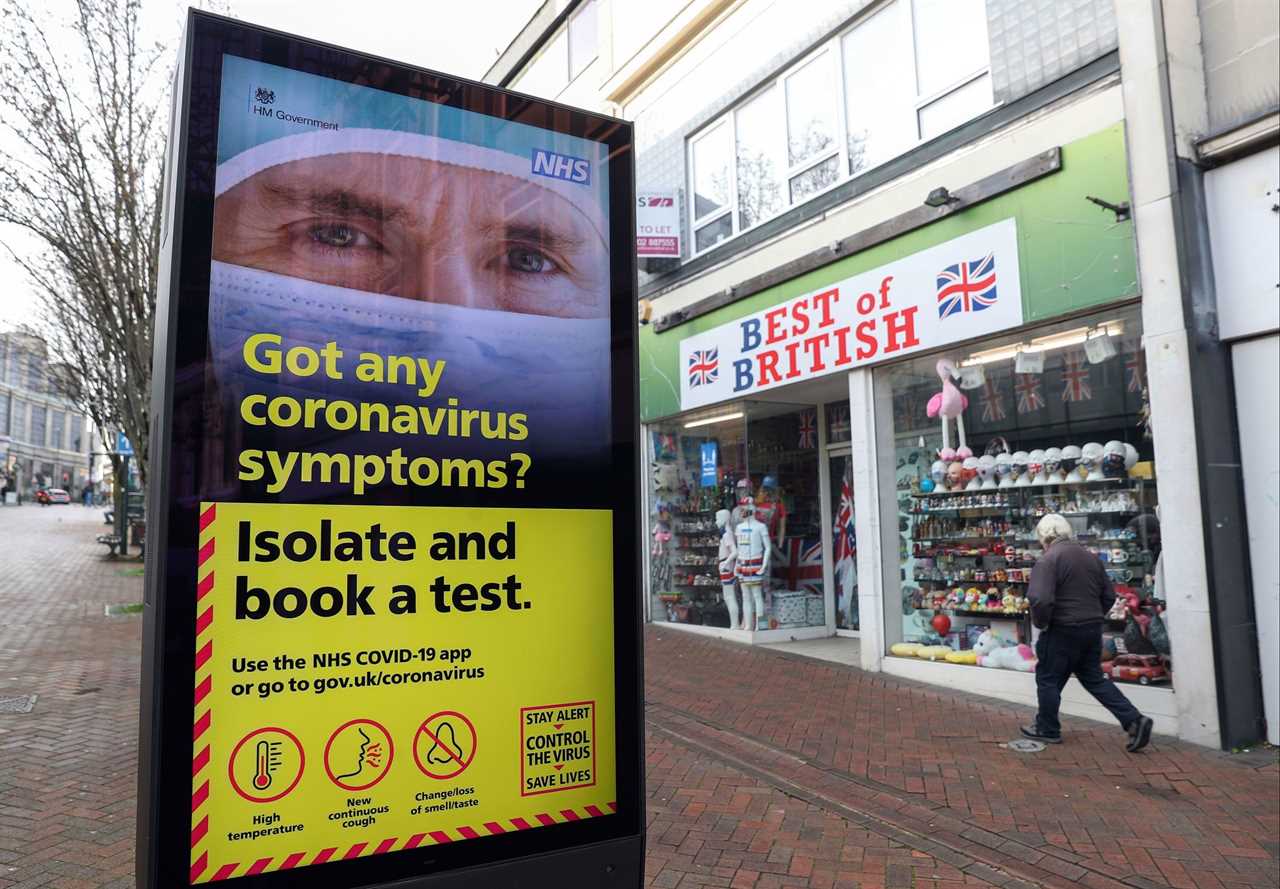
In Tier 3, you can:
- Open non-essential shops
- Meet others in public outdoor spaces in groups of six
- Form a support bubble
- Travel to work if you can’t work from home
- Open hair, beauty and nail salons
- Visit gyms, pools, and leisure facilities
- Visit public buildings such as libraries
- Have a wedding with up to 15 people – but no reception is allowed
- Hold a funeral with up to 30 mourners – with 15 people allowed to attend the wake
In Tier 3, you can’t:
- Meet socially indoors or in private outdoor places with anybody you do not live with, or who is not in your support bubble
- You should maintain social distancing from anyone not in your household or support bubble
- People can’t stay overnight somewhere outside of their local area unless needed for work, education or similar
- Accommodation will be closed in these areas except for specific reasons
- Pubs, cafes and restaurants must close except for takeaway, click-and-collect, drive-through or delivery services.
- You must work from home where possible
- People are advised against travelling out of their area
- You should still wear a face covering
